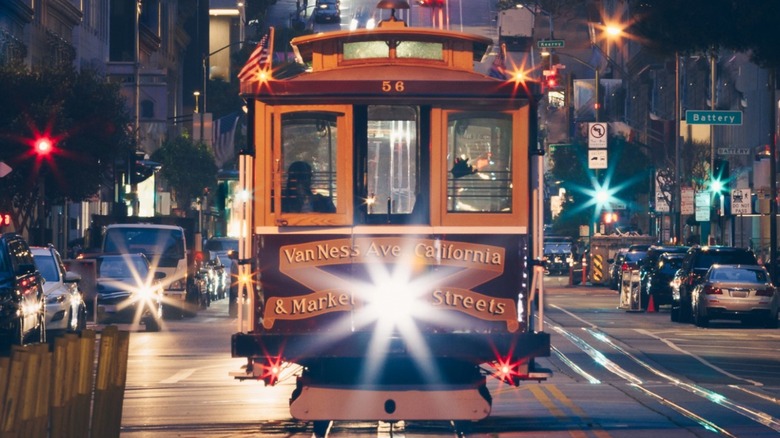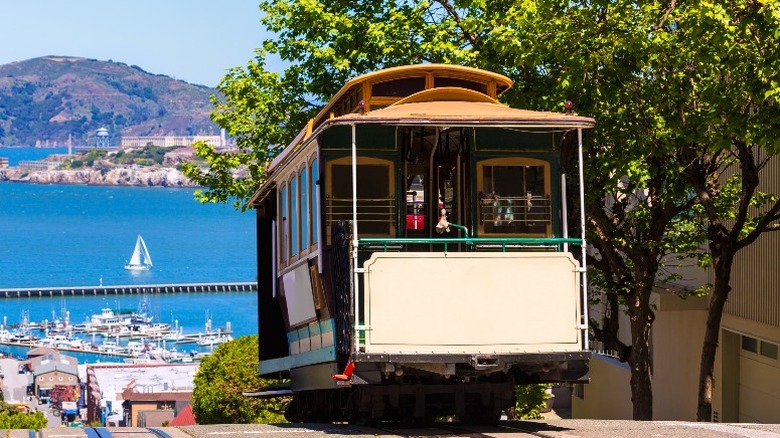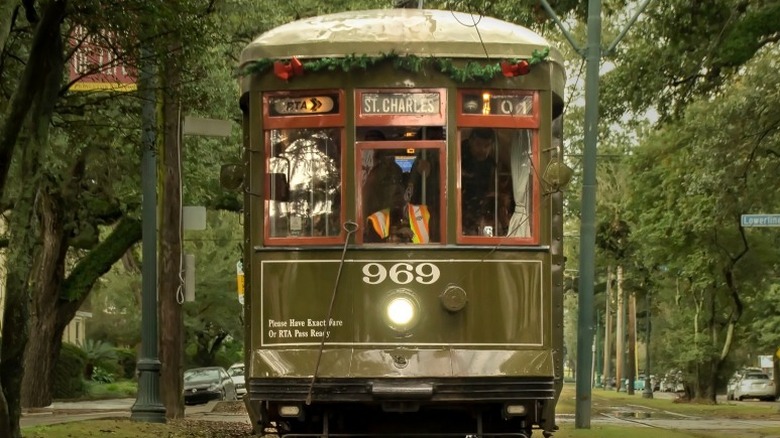The Only Two US National Historic Landmarks That Can Move
Update: The original version of this article called the New Orleans Streetcar a "cable car" one time, but that has been corrected to the correct term "streetcar."
Since 1960, the Secretary of the Interior of the United States has been tasked with determining which "buildings, sites, districts, structures, and objects" are contributing agents to our national culture. Since that time, more than 2,500 National Historic Landmarks have been declared (per The National Parks Service). There are multiple landmarks in each state, ranging from the seven rooted in North Dakota to the whopping 276 in New York. These must-see places encompass a wide variety of items that you might consider putting on your vacation bucket lists. Whether you're riding up the Gateway Arch in St. Louis, Missouri, or gazing in awe at the Hoover Dam in Nevada, including National Historic Landmarks on any trip is sure to make great memories.
The vast majority of the landmarks on this growing list are stationary. But there are two designated items that not only move but are also ridden by both tourists and commuters every day. Each one zips through the streets of the cities they were constructed in, carrying passengers for a small fee. These moving national landmarks are the cable cars that traverse the hearts of San Francisco, California and New Orleans, Louisiana. Whether you're a local who is commuting to work or school or a tourist out to see what these cities have to offer, a streetcar ride is a unique way to take in either urban area.
The San Francisco cable cars were an early addition to the list
Since 1964, the cable car system in San Francisco has been a National Historic Landmark. There are three lines in this network, each one taking travelers to different parts of the city.
The Powell Hyde route follows 2.1 miles of track from Union Square to Fisherman's Wharf. Riders will be able to travel upward to the Russian Hill neighborhood, enabling them to capture some of the more picturesque views of the city. The Powell Hyde line also crosses Lombard Street, which is known as the "most crooked street in the world" (via The Atlas Heart). The line will end at Fisherman's Wharf, but not before passing by the bay so you can get a glimpse at Alcatraz in the distance. The Powell Mason line follows along the Powell Hyde route for much of its 11.6-mile route. When it veers away from the first line, it takes riders up to the North Beach neighborhood before ending and turning around at Taylor Street.
Finally, there's the California line. You won't see many tourists on this route, however. These cars are typically used by commuters, who ride them through Chinatown and into the Financial District. This is a short line at only 1.4 miles long. On a typical day, a trip can be completed in about 15 minutes.
The St. Charles Streetcar in New Orleans is a newer addition to the list
The streetcar system that carries passengers from the New Orleans City Park down to the Audubon Zoo is referred to as the St. Charles Streetcar Line. It was declared a National Landmark in 2014. According to Flowers for Socrates, this line has been in operation since 1923. This makes it the longest continuously running streetcar system in the United States.
If you're staying in the French Quarter, jumping onto the streetcar will allow you to see other parts of this historic city. Explore New Orleans tells us that the streetcar runs a total of 13 miles, giving you plenty of places to stop and eat, shop, and sight-see along the way. From the Quarter, you'll be able to ride to the World War II Museum on the way Uptown. You can depart the car near the city park, taking a stroll through the sculpture garden before visiting the New Orleans Museum of Art.
Traveling down the line from the Quarter takes you along the antebellum mansions in the historic Garden District. There are plenty of stops to hop off here and eat and shop, too. You might see the streetcar filled with students, as this line will take you past both Loyola and Tulane Universities. You'll find the end of the line at Palmer Park. On a typical day, a round-trip ride on the St. Charles Streetcar will take about 90 minutes.


